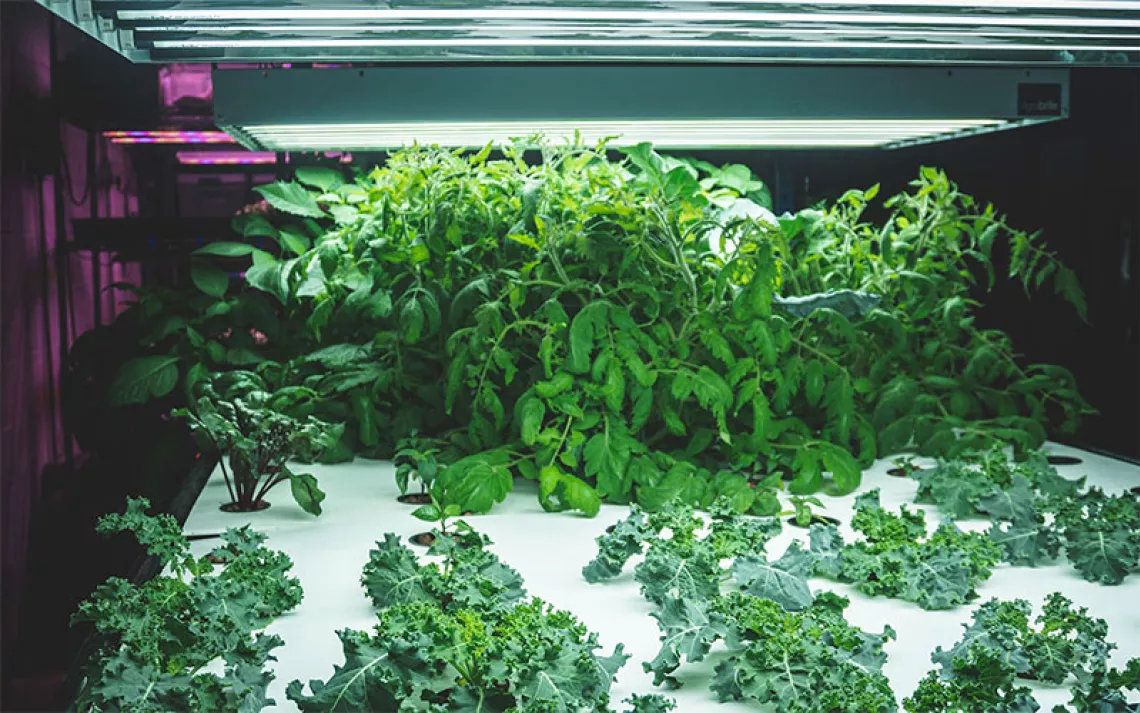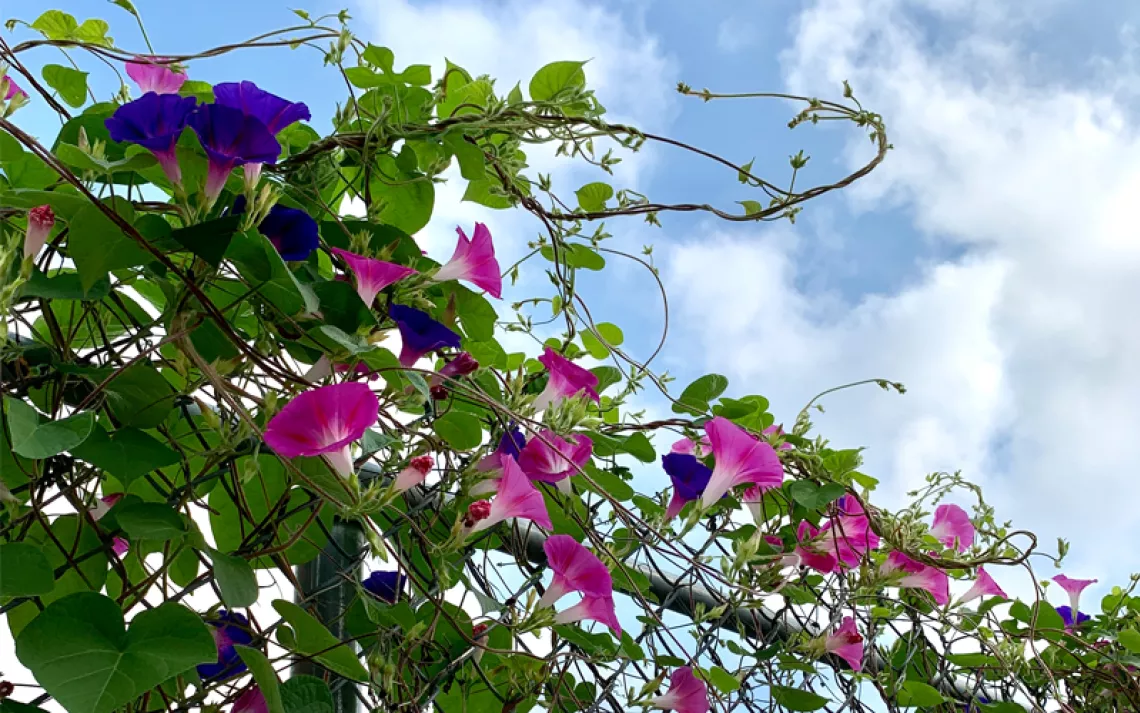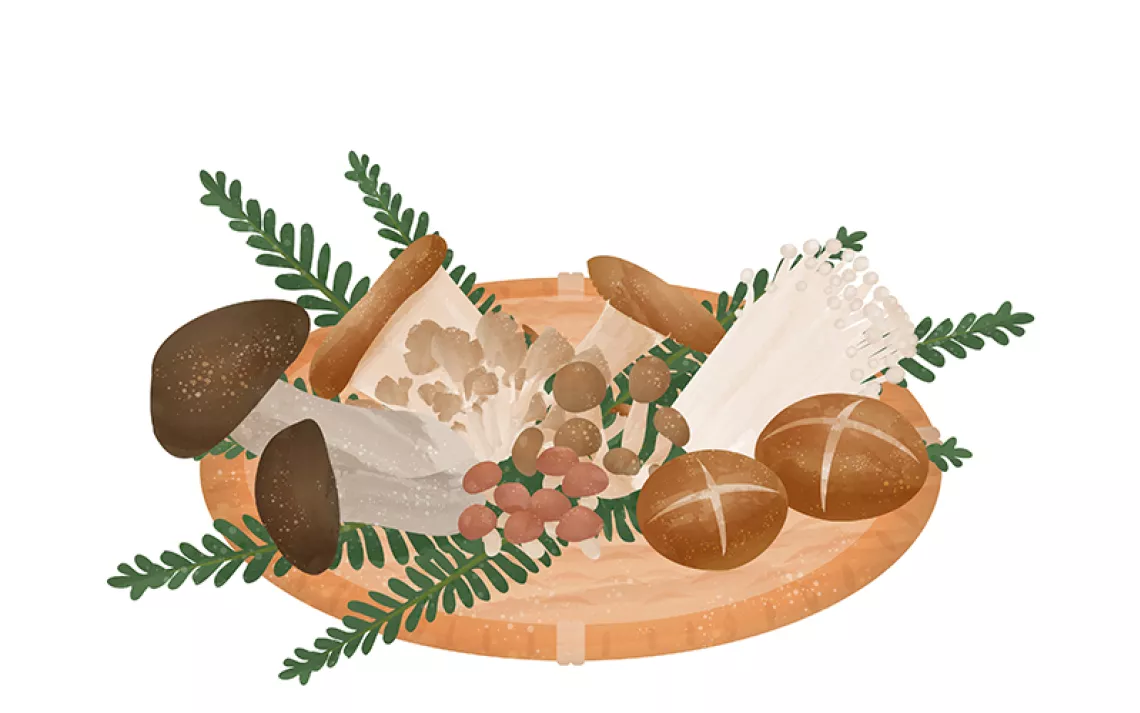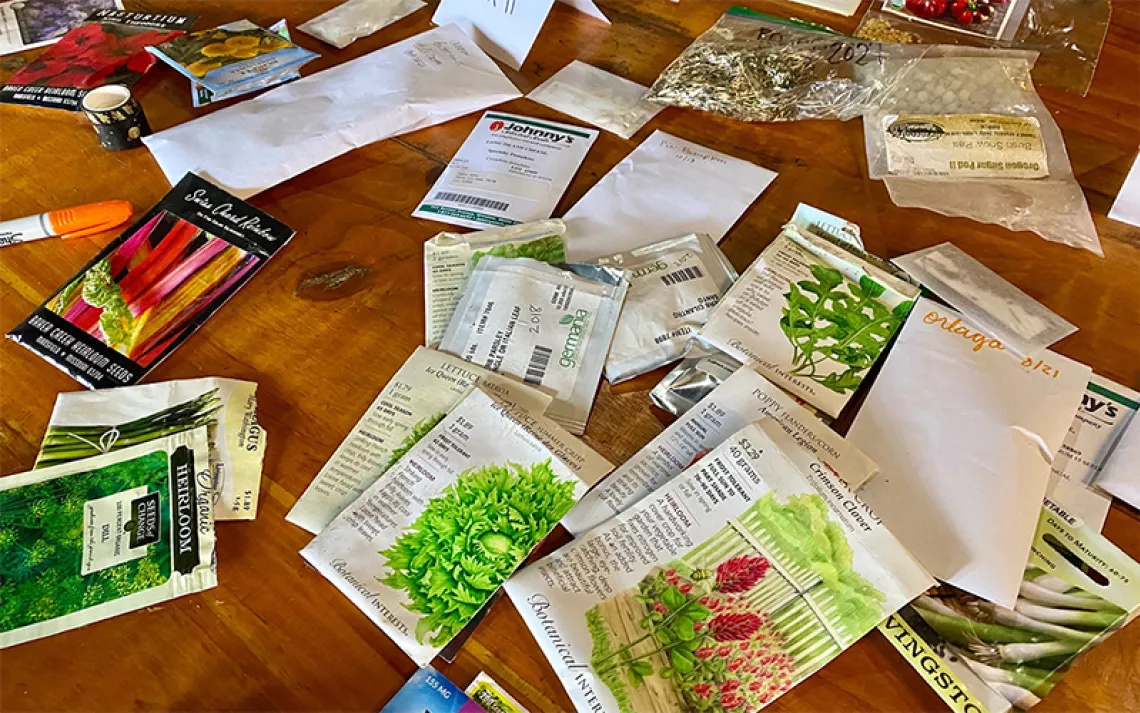Seed Surge, Demystified
How COVID-19 has impacted the foundations of food—and what we can expect moving forward
Almost 10 weeks ago, seed purveyor Rejoice Blackwood says, something startling happened. During a time when sales typically flatline, they started to rise. “On March 11, sales surpassed any daily record we had ever had. Ever, in the history of our company,” the co-owner of Southern Exposure Seed Exchange and seed-growing operation Commonwealth Seed Growers, reports. “And then they kept doing that every day after.”
March 11, 2020, was the day the World Health Organization declared the novel coronavirus a pandemic. “We have called every day for countries to take urgent and aggressive action,” Director-General Tedros Adhanom Ghebreyesus stated. “We have rung the alarm bell loud and clear.”
Coronavirus continued to spread—and seed sales continued to rise, not only for Southern Exposure but for every seed company in the United States. Burpee, one of the nation’s biggest seed retailers and wholesalers, saw growth in “high double digits heading into March” (sales were soon “up a multiple of that” according to a company email). On the other end of the spectrum, so did Fedco Seeds, a worker-consumer cooperative founded in 1978 in response to the expansion of the proprietary seed market and erosion of heirloom varieties. No company was untouched.
“We broke every sales record we have ever had. Bigger than anything we’ve experienced, even during Y2K,” says Nikos Kavanya, branch coordinator of Fedco. This was for one reason, she says: mounting concerns about food access. “People saw empty store shelves and panicked.”
That fear, coupled with a desire for some semblance of control when so much of life seems uncertain, is understandable—especially in light of new data from the Bureau of Labor Statistics showing that food prices have increased at a time when unemployment rates have spiked to nearly 15 percent, the highest rate since the Great Depression.
Sierra reached out to seed stewards Rejoice Blackwood, Nikos Kavanya, and Philip Kauth—the director of preservation at Seed Savers Exchange—to better understand how seed companies are responding to the pandemic, and the implications these skyrocketing sales have on our food security.
*
Sierra: The sales seed companies in the United States are experiencing is unprecedented. What is happening?
Blackwood: I haven’t talked to all of our customers, but people see that we are dependent on a number of supply chains, and they don’t want to be as dependent as they are. When folks place orders, they can write a comment at the bottom, like, “Thanks for sending your seeds,” or whatever. One person wrote, “People laugh at me for buying seeds, but who’s gonna laugh when I have a garden and Trader Joe’s is still a warzone?” They are, in a word, scared.
Kavanya: Fedco is based in Maine, where 90 percent of our food is imported. If the borders are closed or transportation shuts down, [the remaining] 10 percent isn’t enough to feed us. We just keep seeing more and more ramifications as this pandemic goes on of systems that are really struggling to maintain themselves. We see how extremely fragile the supply chain is. If any little link goes sideways, then what you expect to see on store shelves isn’t there.
On the surface, this increase in sales should be a good thing, but companies have struggled to keep up.
Blackwood: We have seeds, but we don’t have the space, labor, and infrastructure to ship them as quickly as people are trying to buy them. We have had to periodically turn off our website in order to not be overwhelmed, and will pause when we reach capacity. The concern is, if someone ordered seed back in March and we just sent them now—in May—it might be too late for them to plant them.
Kavanya: We’ve got people from all over the country ordering from us, and people can plant at different timings. So if people here in Maine, for example, get their orders in by the end of the month, it’s perfect timing for frost-free planting. But we have also been inundated and had to take breaks to catch up.
Most Americans have an extremely limited connection to seeds—and no understanding of how the industry behind it works. Can you shed some light on what it takes to grow out seed?
Blackwood: I work at Southern Exposure and am also a seed grower based in Virginia. What seed companies do is keep the very best seed for the next year, for their seed grower, and send that seed to us with a contract asking us to grow a certain amount. We then plant that seed out, grow the plants, harvest and process the seed, and ship it to the seed company.
At Commonwealth Seed Growers, we cultivate three or four acres' worth of vegetable crops specifically for seed and breeding purposes. The companies we work with then clean the seed and germination-test it.
To confirm it’s viable, and ensure customers will get seeds that will actually grow into plants?
Blackwood: Exactly. And if a seed company runs low on a certain variety, like we see happening now, they’re going to make sure to keep some stock seed to grow so we can make more for the next year. But it will take a full growing season before that seed can again become available.
Kavanya: Seeds are a long-term project.
Burpee asserts that it created the first hybrid vegetable seed stocks in the United States. Those types of seeds are the foundation of the proprietary seed market, developed through the carefully controlled cross-pollination of two different parent plants that produce unique traits that gardeners and farmers want. But because those plants don’t produce uniform offspring in future plantings, seeds have to be repurchased each growing season. Can you talk a bit about how all seeds are not the same?
Kauth: At Seed Savers Exchange, all the seeds we save and sell are open-pollinated varieties. You can save seeds from the plants you grow from season to season. If we had hybrids in the collection, we couldn’t technically keep them true to type.
Every time we grow our plants out and replenish the seed, our isolation distances are good [to ensure there is no contamination from pollen of other plants], which is essential to making sure customers get the variety they ordered. If you bought seed once from Seed Savers and then never bought from us again because you saved your own seeds, we’d consider that a success. We’re here for people to get seeds, grow them, save them, share them—and put the control of their food into their own hands.
What's surprised you most about the kinds of seeds people are ordering?
Blackwood: I frequently talk to customers on the phone. There’s a certain pattern to people who call and know exactly what they want. An experienced gardener will probably not order, for example, more than three packets of tomatoes, because they know that they don’t have enough room to plant that many kinds. They tend to order maybe one variety of everything they want to grow, or maybe two of things they really like. Less-experienced gardeners tend to go with seeds that have a nice description; they get bogged down in certain categories. They maybe order a lot of herbs and six kinds of tomatoes, but they don’t order a lot of staples.
Our seed packets contain, in a lot of cases, more seed than someone needs for their backyard garden. You get a packet of our collard seed. It has 200 seeds in it. Most people do not plant 200 collards in one year.
Kauth: I’ve been working here at Seed Savers for almost seven years. There are varieties on our pick line that I have never seen out of stock until now. People are requesting the same varieties over and over, and we’re having a hard time keeping up. It’s unbelievable.
We have an automated packing machine, but, you know, not everything can be done by machine. And then, taking social distancing guidelines into account, we can only do so much at a time and we only have so many staff on hand to help.
Are you concerned that you'll run out of seeds?
Kauth: We have it on hand, for the most part. It’s just, we can’t keep up with how many people are ordering certain varieties. They’ll be available at some point. We just need to go into the long-term storage part of our seed house and start packing seeds.
Blackwood: Most of our supply systems aren’t designed to have unexpected spikes, because they’re not expected. So why would someone over-produce and then have to spend the money to store this overproduction? They wouldn’t; we rely on people behaving in relatively predictable fashion. Our systems are designed to supply people with about as much stuff as they wanted last year. We won’t run out, but when people change their spending habits very quickly, it’s hard for any system to keep up.
Add to that uncertainty the burgeoning number of new gardeners venturing out into the world...
Blackwood: I was reading an article about how the government encouraged Victory Gardens during World War II. The first year, everyone was very excited about it. The second year, a lot of people had not had success in their garden, and it was a much harder push for the government to be like, “Do it again but better this time.”
Kavanya: I have concerns moving forward about what the future looks like in terms of people having tried gardening, not knowing what they’re doing, failing, and then not wanting to do it again. Or, when I look at some of these orders, they have ordered a two- or three-year supply of seed. They’re probably not gonna be back next year.
On the supply side, over the past six years the weather has become really unpredictable. Growers no longer know what to expect. They’re getting hit with mostly weather, but also bug problems that aren’t in their repertoire of challenges they deal with on an ongoing basis. This past year was the worst on record since I’ve been contracting with growers in terms of failures across the board for all different kinds of reasons. It’s really a challenge because if they can’t grow the seeds, then we don’t have food.
And this is directly because of climate change?
Kavanya: That’s what they tell me. At this point, I don’t know how to plan for next year.
Seeds aren’t just biological markers; they reveal our history, geography, and humanity. What stories are the seeds revealing right now?
Kauth: That we are disconnected. People walk into the store and see apples and broccoli and think it comes from the store. But somewhere, in some part of the country or some part of the world, people are growing that. People are making that food available to other people through the supply chain. I want to encourage people to garden, support a CSA, or buy from a farmers’ market so they have a better idea of where their food comes from.
Saving and sharing seeds and growing the foods we want to grow can help us reduce food insecurity—and increase food sovereignty. This limits our reliance on industrial food chains that stretch all over the world and gives us an opportunity to rebuild our connection to the land and our communities and prioritize culturally appropriate foods.
Kavanya: Seed-saving is a skill that we used to have as a country. We lost it—and I think it’s time to start gaining some of it back.
Blackwood: Now’s the time. And it’s something anyone can do. Anyone who can grow a plant can save seeds. If what you want is to not be dependent on supply chains, ordering seeds from us is still being dependent on a supply chain. Saving your own seed and sharing it with your neighbors is the way to be independent.
I admire the ways in which your companies push to decommoditize seeds and keep them in the commons. Saving seed is a way to take back our power.
Blackwood: There’s this idea that if you buy a seed in a packet, it’s somehow better than what you can save in your own garden. But the stuff you save is better for you. It’s the plant that did well in your climate. One that lived through whatever seed-starting method you used, with your watering or lack of watering. Your seeds are the best possible seeds you could grow for your area and your growing style.
And, as a farmer, I want to say this: We Americans can grow our own food. We can supply all of the food that we need for the people who live here. Nobody’s going to starve because the food supply chain isn’t functioning. People will starve because of other unnecessary reasons.
We see that coming into painful relief; the pandemic lessons are coming at us hard and fast. Is there anything else we should consider?
Kavanya: I want people to start thinking about the future—past this surge. Times are fundamentally changing, and we need to change with them. We need to set up community support assistance programs that include food growing. We need to get to know who our neighbors are—what they grow, what they need, and how to deliver it—in terms of food and other things. We need to look out for each other . . . maybe we create a community root storage system or a garden people could do together and then share the harvest. Because this is not the only time we’re going to see COVID-19, and it’s probably not the only time we’re going to see a pandemic. I am not saying this to be alarmist but to be prepared.
 The Magazine of The Sierra Club
The Magazine of The Sierra Club




